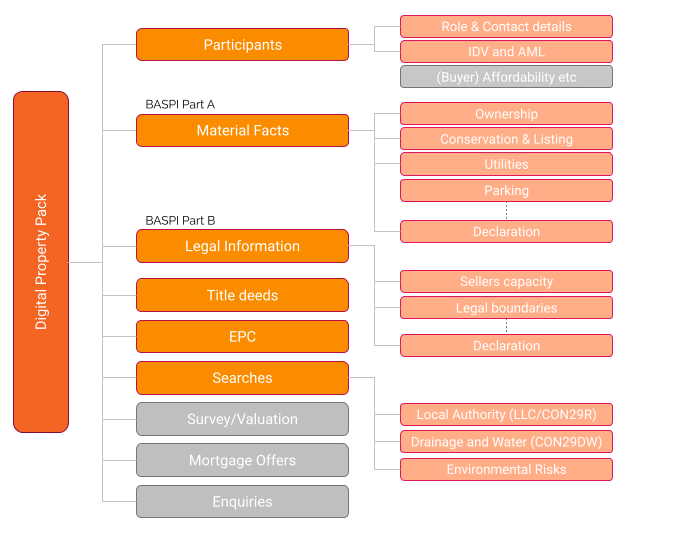
When you then work out the sequencing of all that information and the myriad of formats that it arrives in, it’s no wonder we’ve created whole processes and cottage industries to prevent things from going wrong and to manage a very disconnected industry and customer experience.
As lenders and intermediaries, we’ve done a brilliant job working around these challenges and finding ways to make the process function. But thinking about how we could fix our problems as part of an open ecosystem solution highlights some of the key areas that we’ve long struggled with.
- Critical information that customers, intermediaries, and lenders need isn’t surfaced at the point in time we need it.
- Information is provided in static documents and reports which can’t be interrogated easily.
- The different formats of the information we provide and receive make it almost impossible to digitally populate our systems or to share easily between systems.
- Each participant in the transaction has their own forms, rules, and compliance about what information they will accept and from where.
- Our systems don’t talk to each other and with around 6,000 intermediary firms, c.200 lenders, and a plethora of other transaction participants connecting everyone to each other is impractical.
- As information is added or updated in one system throughout the transaction, it can fall out of sync at participant level meaning we aren’t all working with the same version of the truth.
- There’s little visibility of what has been added or updated by who and why so we can’t provide provenance across the information.
There are so many other examples you could add to this list, and they all give us similar headaches and lead to similar outcomes. A lack of verifiable data, transparency, interoperability and trust would make our lives a bit easier and give us the opportunity to deliver a more efficient, holistic and integrated end-to-end process for our customers.
An open standard approach
So back to three-pin plug thinking and starting with an interoperability picture on the front of our jigsaw box – what are the critical pieces of information we could surface at the start of a property transaction that would be useful for more than one party in the process? How could we use open standards and trust frameworks to make it digital, trusted, shareable, and interoperable across all parties in the transaction?
The Home Buying Selling Group participants helped us answer the first question. They identified the different forms and data sets that are required or collected by participants across the industry and pulled out everything that is categorised as material or critical information to create a ‘Property Pack’. Everything in the diagram is currently produced somewhere in the process and used by more than one party but the orange boxes were the starting point for what we could surface upfront.
Our technology volunteer group worked through each orange box in the Property Pack and collaborated on how to represent that information as data in a common and standardised way, where the source of the data originates, how to wrap provenance around the data to make it trustable, and how to describe the data so we can share it seamlessly across systems.
We created a Property Data Trust Framework.
A long journey
It’s taken almost two years to reach a point where we’re confident in launching this publicly.
It would have been easy to write some insights and ideas papers or to talk theoretically about how this could be achieved but we wanted to show why this time it really is different. So, we walked the walk. We built a data schema, created a set of open standards, connectivity and overlay tools, and wrote a trust framework. We tested them in proof of concepts, did a trial run with a very small number of transactions, then we ran our own live beta pilot.
Each of our volunteer firms has implemented the data schema in their own platform and connected to each other using an open API specification so that everyone collects, shares, and represents the data in the same way.
The results have been astonishing. I could share lots of amazing stats around an improved customer experience, less fall throughs, more transparency, huge efficiency gains, lower transaction costs, and quicker completions, but I’m going to let the firms tell that story themselves.
They deserve it. The thing I’m most proud of is seeing how much we achieved in such a short space of time. We’ve delivered something tangible, innovative, and practical that works for every part of our industry and gives us the foundations and tools we need to finally deliver a fully digital homebuying and selling process.
The next step
We’ve overcome the usual barriers to adoption through a cooperative and collaborative approach, making sure the schema and everything we’ve created so far is open-source and will always be free for anyone to use. We’ve committed to continue working with other frameworks, associations, government, and industry to ensure the Property Data Trust Framework is kept up to date and develops as digital data sources become available and technology standards continue to evolve.
I can’t promise this will deliver all the solutions we need but I am excited to see us have our internet moment and to lead the next phase of our ecosystem transformation through the Open Property Data Association.
Read parts one to three in the series detailing the evolution of the Open Property Data Association here (part one), here (part two) and here (part three).




















